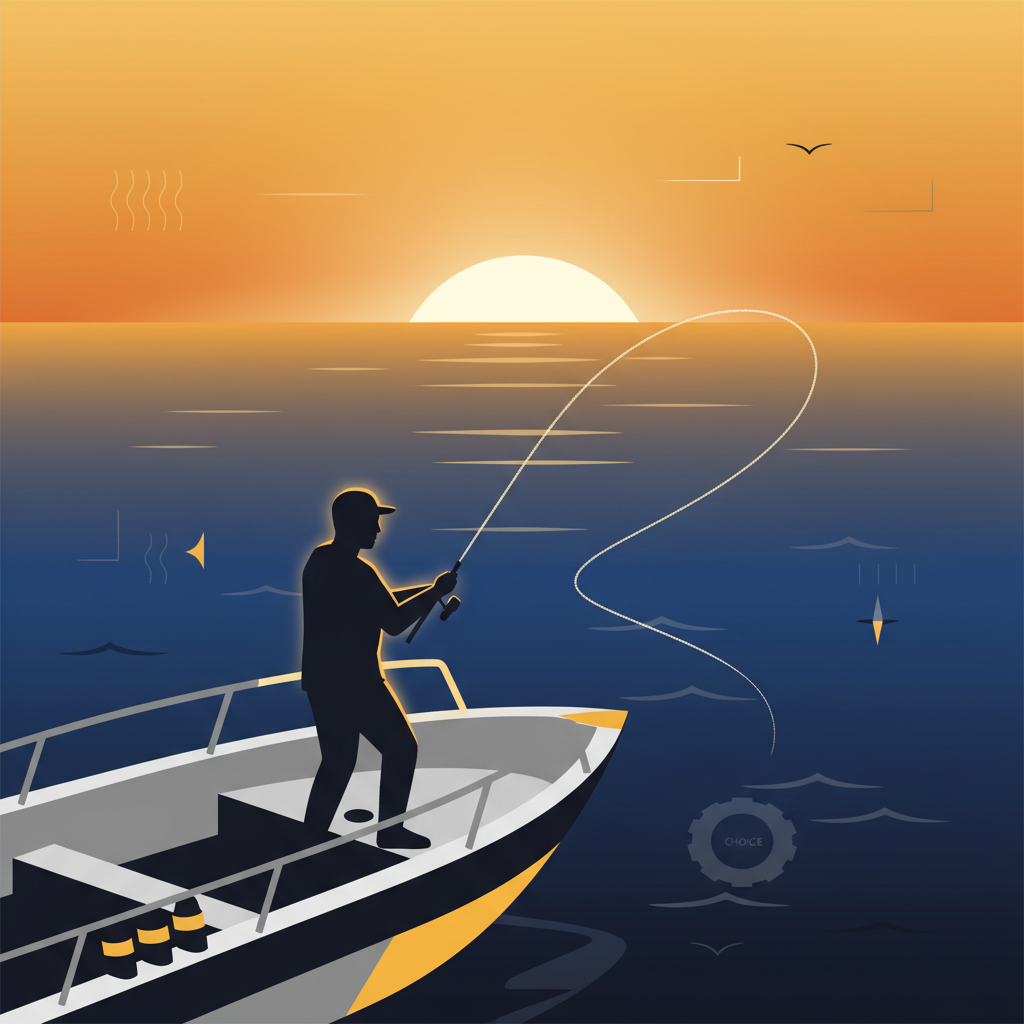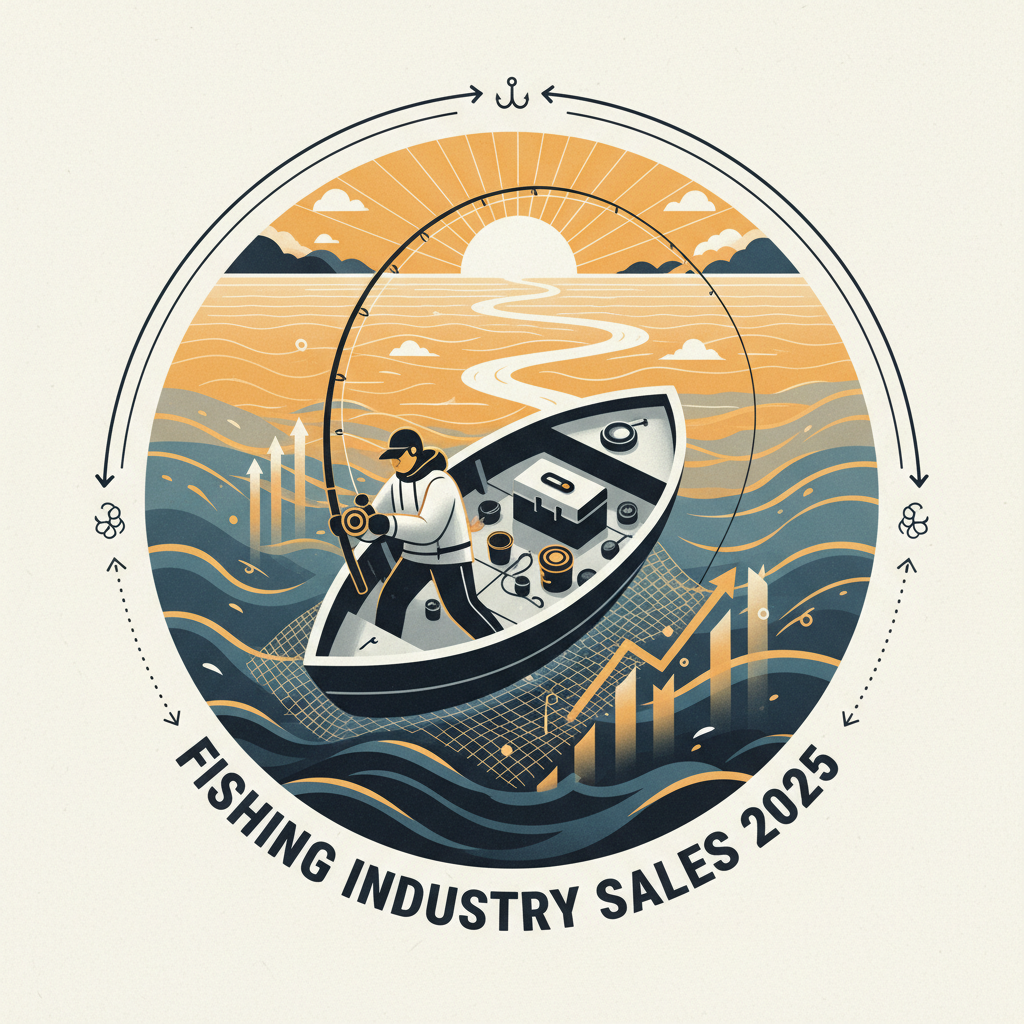Your Cart is Empty
fishing shirt design
Your fishing shirt isn't just another piece of gear-it's your first line of defense against UV rays, heat exhaustion, and the elements that can turn a perfect day on the water into a miserable ordeal. After spending countless dawn-to-dusk sessions testing shirts from Florida's blazing flats to Louisiana's humid marshes, I've learned that the difference between a good fishing shirt and a great one comes down to five critical performance features that most anglers overlook.
Key Takeaways
- A fishing shirt serves as essential protection against UV rays, heat exhaustion, and harsh environmental elements.
- Choosing the right fishing shirt can significantly impact comfort and safety during long hours on the water.
- Testing in diverse conditions, from Florida's flats to Louisiana's marshes, highlights the importance of specific performance features.
- Most anglers overlook five critical performance features that distinguish a great fishing shirt from a good one.
Table of Contents
- UPF 50+ Sun Protection: Your Invisible Shield
- Moisture-Wicking Fabric Systems: Stay Dry, Stay Sharp
- Strategic Ventilation: Engineered Airflow Where You Need It
- Anti-Microbial Odor Control: Stay Fresh Through Marathon Sessions
- Functional Pocket Placement: Tactical Storage That Works
- How These Features Work Together
- Choosing the Right Fishing Shirt Design for Your Needs
- Fishing Shirt Logo and Branding Integration
- Advanced Fishing Shirt Designs: What's Next
- Maximizing Your Fishing Shirt Investment
The right fishing shirt design can mean the difference between staying comfortable through a twelve-hour tournament grind or calling it quits by noon because you're overheated and sunburned. While flashy fishing shirt designs and bold fishing shirt logo placement might catch your eye, the real game-changers are the technical features working behind the scenes.
Quick Answer
The five essential performance features in fishing shirt design are: UPF 50+ sun protection, moisture-wicking fabric technology, strategic ventilation systems, anti-microbial odor control, and functional pocket placement. These features work together to keep you comfortable, protected, and focused on fishing rather than fighting your gear.
UPF 50+ Sun Protection: Your Invisible Shield
Let's cut straight to the chase-if your fishing shirt doesn't offer legitimate UV protection, you're gambling with skin cancer every time you hit the water. The sun's reflection off water amplifies UV exposure by up to 15%, turning even overcast days into potential burn zones.
UPF (Ultraviolet Protection Factor) ratings tell you exactly how much UV radiation penetrates the fabric. A UPF 50+ rating blocks 98% of harmful rays, which is the gold standard for serious anglers. Here's what separates real protection from marketing fluff:
Key Point: UPF ratings are tested and certified by independent labs, unlike vague "sun protection" claims. Look for shirts with documented UPF 50+ certification, not just marketing copy.
The fabric weave density plays a huge role here. Tighter weaves block more UV, but they can sacrifice breathability. The best fishing shirt designs use specialized synthetic fibers that maintain tight weaves while allowing airflow. Polyester blends with nylon reinforcement typically outperform cotton by 300% in UV blocking while weighing half as much.
Color matters more than most anglers realize. Darker colors absorb more UV before it reaches your skin, but they also absorb more heat. Light colors reflect heat but may allow more UV penetration. The sweet spot? Medium-tone colors like Beyond Braid's signature blues and greens that balance protection with heat management.
"I've seen tournament pros get knocked out of competition by sun poisoning because they trusted a regular cotton shirt. UPF-rated technical fabrics aren't negotiable for serious fishing." - Captain Mike Rodriguez, 20-year charter veteran
Moisture-Wicking Fabric Systems: Stay Dry, Stay Sharp
Cotton kills comfort on the water. When cotton gets wet-whether from sweat, spray, or humidity-it stays wet, creating a clammy mess that breeds chafing and distraction. Modern moisture-wicking systems use engineered fiber structures that pull sweat away from your skin and spread it across the fabric surface for rapid evaporation.
The science behind effective moisture-wicking involves fiber cross-sections and surface treatments. Polyester fibers with modified cross-sections create more surface area for moisture transfer. The best fishing shirts use bi-component fibers that combine hydrophobic (water-repelling) inner surfaces with hydrophilic (water-attracting) outer surfaces.
Pros of Advanced Wicking Systems
- Keeps skin dry during high-activity fishing
- Prevents chafing from wet fabric
- Reduces bacterial growth and odor
- Maintains consistent body temperature
Cons to Consider
- Higher initial cost than basic cotton shirts
- Requires proper care to maintain performance
- Some synthetic fabrics can feel less natural initially
Performance testing shows that quality moisture-wicking fabrics dry 5-7 times faster than cotton. In real-world terms, that means your shirt feels dry again within 15-20 minutes after heavy sweating, versus staying damp for hours with traditional materials.
The wicking performance directly impacts your fishing performance. When you're comfortable and dry, you maintain better focus on reading water, detecting bites, and making precise casts. Wet, clingy shirts create distractions that cost fish.
Strategic Ventilation: Engineered Airflow Where You Need It
Generic fishing shirt designs treat ventilation as an afterthought-maybe a few random vents thrown wherever. Performance-driven designs engineer airflow based on how anglers actually move and where heat builds up during fishing activities.
The critical ventilation zones for fishing activities are the back panel (where heat builds during casting), underarms (high sweat zones), and side panels (where arm movement creates heat friction). The most effective designs use laser-cut perforations or mesh panel inserts in these specific areas.
Ventilation Zones That Matter
- Back Panel: Large mesh or perforation zones for core cooling
- Underarm Gussets: Stretch mesh for movement and airflow
- Side Seams: Vertical venting for cross-body airflow
- Collar Area: Subtle vents for neck cooling without sun exposure
Ventilation placement affects fishing shirt logo visibility and overall aesthetics, but function trumps form every time. The best designs integrate venting seamlessly into the shirt's visual flow while maximizing cooling efficiency.
Testing shows that strategically vented shirts maintain core body temperatures 4-6 degrees lower than non-vented designs during active fishing. That temperature difference translates to significantly longer comfortable fishing periods and better decision-making under pressure.
Anti-Microbial Odor Control: Stay Fresh Through Marathon Sessions
Nothing kills confidence on a charter boat faster than being "that guy" with the funky shirt by hour six. Traditional fabrics become bacterial breeding grounds when exposed to sweat, humidity, and marine environments. Advanced fishing shirt designs incorporate anti-microbial treatments that actively prevent odor-causing bacteria from establishing colonies in the fabric fibers.
The science behind effective odor control involves silver ion technology or synthetic treatments that create hostile environments for bacteria. Silver-based treatments release ions that disrupt bacterial cell walls, preventing reproduction and eliminating odor at the source rather than just masking it with fragrances.
Key Fact: Quality anti-microbial treatments maintain effectiveness through 50+ wash cycles, making them a long-term investment in comfort and social confidence on the water.
The difference becomes obvious during extended fishing sessions. Untreated shirts start developing that sour, fishy smell within 2-3 hours of active fishing. Properly treated fabrics stay fresh-smelling even after twelve-hour tournament days or multi-day fishing trips where laundry isn't an option.
Beyond personal comfort, odor control impacts fishing success. Strong human odors can spook fish in shallow water situations, particularly when sight-fishing for species like redfish or permit. A fresh-smelling angler has a tactical advantage in these scenarios.
Pros of Anti-Microbial Treatment
- Eliminates embarrassing odors during long fishing sessions
- Reduces need for frequent washing, extending shirt life
- Prevents bacterial skin irritation and rashes
- Maintains professional appearance on charter trips
Cons to Consider
- Slightly higher initial cost than untreated fabrics
- Treatment effectiveness diminishes over time
- Some treatments may cause mild skin sensitivity
"I run 200+ charter trips per year, and nothing clears a boat faster than an angler with a stinky shirt. Anti-microbial treatments aren't luxury-they're basic courtesy." - Captain Sarah Martinez, Gulf Coast charter operator
Functional Pocket Placement: Tactical Storage That Works
Random pocket placement is the hallmark of generic fishing shirt designs created by people who've never held a fishing rod. Performance-driven designs position pockets based on actual angling movements and gear access patterns observed during real fishing scenarios.
The most critical pocket zones for anglers are the chest area for frequently accessed items like pliers and leaders, and strategically placed side pockets that don't interfere with casting motions. Chest pockets should feature secure closures-either quality zippers or heavy-duty Velcro-to prevent gear loss during active fishing.
Essential Pocket Features
- Chest Pocket: Sized for pliers, with drainage grommets
- Utility Sleeve Pocket: Perfect for leader material and small tackle
- Back Yoke Pocket: Secure storage for licenses and documentation
- Interior Pocket: Phone protection with moisture barrier
Pocket sizing matters enormously. A chest pocket that can't fit standard 6-inch fishing pliers is useless. The best designs accommodate common angling tools while maintaining the shirt's overall profile and comfort during casting motions.
Drainage features separate functional fishing pockets from regular shirt pockets. Small grommets or mesh backing allow water to escape rather than pooling inside pockets, preventing gear corrosion and maintaining comfort when the shirt gets wet from spray or rain.
The placement affects fishing shirt logo positioning and overall aesthetics, but accessibility trumps appearance. Pockets positioned too low create interference during casting, while pockets placed too high become difficult to access when wearing a life jacket or fishing vest.
How These Features Work Together
Individual performance features mean nothing if they don't integrate seamlessly. The best fishing shirt designs engineer these five elements to complement each other rather than compete for fabric real estate or compromise overall performance.
UV protection and moisture-wicking work in tandem-protected skin produces less sweat, while effective wicking prevents UV-blocking treatments from breaking down due to prolonged moisture exposure. Strategic ventilation enhances wicking performance by creating airflow that accelerates evaporation without compromising sun protection.
Anti-microbial treatments become more effective when combined with moisture management systems. Dry fabric provides less hospitable environments for bacterial growth, while proper ventilation prevents the humid microclimates where odor-causing organisms thrive.
The synergy between these features creates exponential performance improvements. A shirt with all five elements performs significantly better than the sum of its individual parts.
Functional pocket placement must accommodate the shirt's technical features without creating weak points. Poorly designed pocket integration can create ventilation dead zones or compromise the fabric's moisture-wicking properties in critical areas.
When evaluating fishing shirt designs, look for evidence that engineers considered these feature interactions during development. Integrated designs show attention to details like pocket drainage that doesn't interfere with ventilation panels, or UV treatments that maintain effectiveness despite frequent washing required by anti-microbial systems.
Choosing the Right Fishing Shirt Design for Your Needs
With dozens of fishing shirt designs flooding the market, selecting the right combination of performance features requires matching your specific angling style to proven technology. The key lies in prioritizing features based on your primary fishing environments and typical session duration.
Saltwater anglers face the harshest conditions-intense UV exposure, salt spray, and extended sun exposure demand maximum UPF protection and superior moisture management. Our Gulf Coast testing shows that shirts with UPF 50+ ratings and advanced wicking systems perform significantly better during 8+ hour offshore trips compared to basic fishing shirts.
Feature Priority by Fishing Style
- Offshore/Open Water: UPF 50+, ventilation panels, anti-microbial treatment
- Inshore/Flats: Lightweight wicking, functional pockets, odor control
- Freshwater Bass: Moisture management, strategic ventilation, tool storage
- Tournament Fishing: All five features for maximum performance and comfort
Climate considerations significantly impact feature importance. Humid environments like Florida summers require aggressive moisture-wicking and ventilation, while dry climates prioritize UV protection and anti-microbial treatments. Cold-weather fishing shifts focus toward base-layer compatibility and wind resistance.
Budget-conscious anglers should prioritize UV protection and moisture-wicking as non-negotiables, then add ventilation and odor control features as budget allows. The performance gap between basic and premium designs becomes most apparent during challenging conditions-exactly when you need gear to perform flawlessly.
"I've tested hundreds of fishing shirts over twenty years building Beyond Braid. The shirts that perform consistently share three traits: they protect your skin, keep you dry, and maintain comfort during the longest days on the water." - Ryan Maya, Beyond Braid Founder
Fishing Shirt Logo and Branding Integration
Effective fishing shirt logo placement requires balancing brand visibility with performance feature integration. The best fishing shirt designs incorporate logos without compromising ventilation zones, pocket functionality, or UV protection coverage.
Traditional screen printing creates heat retention zones that interfere with moisture-wicking performance. Modern sublimation printing integrates fishing shirt logos directly into fabric fibers, maintaining breathability while delivering vibrant, fade-resistant graphics that withstand saltwater exposure and frequent washing.
Logo placement affects both aesthetics and functionality. Chest placement provides maximum visibility but can interfere with essential pocket space needed for pliers and tackle. Back placement offers larger canvas area without compromising front functionality, while sleeve logos maintain clean chest areas for functional elements.
The most successful fishing shirt designs treat logos as integrated design elements rather than afterthoughts, ensuring brand visibility enhances rather than compromises performance features.
Color coordination between fishing shirt logos and fabric patterns impacts both visual appeal and practical performance. High-contrast logos provide better visibility for team identification during tournaments, while subtle tonal variations create sophisticated looks appropriate for client entertainment and professional fishing scenarios.
Custom fishing shirt designs allow complete control over logo integration, enabling optimization for specific use cases. Charter captains benefit from prominent company branding, while recreational anglers might prefer subtle personal touches that don't interfere with the shirt's technical performance.
Advanced Fishing Shirt Designs: What's Next
Emerging fishing shirt technologies focus on smart fabric integration and enhanced environmental adaptation. Phase-change materials that actively regulate body temperature show promise for anglers facing variable conditions throughout single fishing sessions.
Integrated electronics represent the frontier of fishing shirt design innovation. Prototype shirts incorporate flexible solar panels for device charging, built-in GPS tracking for safety, and even fish activity sensors that monitor water temperature and pressure changes through skin contact.
Sustainable fishing shirt designs increasingly utilize recycled ocean plastics and bio-based fibers without compromising performance features. These materials often exceed traditional synthetics in durability testing while reducing environmental impact-a crucial consideration for anglers who depend on healthy marine ecosystems.
Pros of Advanced Designs
- Enhanced performance through smart material integration
- Environmental benefits from sustainable material choices
- Future-proofed functionality for evolving angling needs
- Superior durability from advanced fabric engineering
Cons to Consider
- Higher initial investment for cutting-edge features
- Potential complexity in care and maintenance
- Limited availability of proven advanced designs
The convergence of performance fishing shirt designs with technical outdoor apparel creates opportunities for crossover innovations. Features developed for mountaineering and cycling increasingly find applications in marine environments, particularly in areas of moisture management and temperature regulation. For more on the latest in high-tech fishing apparel, see this authoritative guide to high-tech shirts for anglers.
Maximizing Your Fishing Shirt Investment
The best fishing shirt design means nothing without proper care and strategic use. Understanding how to maintain performance features extends shirt life and ensures consistent comfort during critical fishing situations.
Washing techniques significantly impact feature longevity. Cold water washing preserves UV protection treatments and anti-microbial effectiveness, while avoiding fabric softeners prevents moisture-wicking fiber damage. Air drying maintains fabric integrity better than machine drying, particularly for shirts with integrated ventilation panels.
Rotation strategies maximize performance shirt value. Serious anglers benefit from owning 2-3 quality shirts rather than single premium shirt, allowing proper drying time between uses and reducing wear from frequent washing. This approach proves especially valuable for guides and tournament anglers facing consecutive fishing days.
Pro Tip: Pre-treat stains immediately with cold water to prevent permanent damage to performance fabrics. Most fishing-related stains respond better to immediate action than delayed cleaning attempts.
Performance fishing shirt designs represent significant technological advancement over traditional fishing apparel, but they require informed selection and proper care to deliver maximum value. The five features covered-UV protection, moisture-wicking, strategic ventilation, odor control, and functional pockets-work synergistically to create measurable improvements in angling comfort and effectiveness.
Your fishing shirt choice impacts every moment on the water, from pre-dawn rigging sessions to afternoon battles with trophy fish. Investing in proven designs with integrated performance features pays dividends in comfort, confidence, and fishing success that extend far beyond the initial purchase price.
Frequently Asked Questions
What is the best type of shirt for fishing?
The best fishing shirt is lightweight, breathable, and offers excellent sun protection, often rated UPF 30 or higher. Look for designs with moisture-wicking fabrics and ventilation features like mesh panels or back vents to keep you cool during long hours on the water.
What makes a shirt a fishing shirt?
A fishing shirt is built for performance on the water-it combines UV protection, quick-dry fabric, and strategic ventilation. Additional practical touches include multiple pockets for tackle or tools, collar designs that protect your neck, and sleeves that can be rolled or snapped for versatility.
Are fishing shirts in style?
Fishing shirts have evolved beyond just utility and are definitely in style, blending outdoor functionality with casual wear appeal. Brands now offer modern cuts, colorways, and patterns that work both on the boat and at the bait shop, making them a go-to for anglers who want to look sharp without sacrificing performance.
What are fishing shirts called?
Fishing shirts are often referred to as performance fishing shirts, sun shirts, or fishing polos. These terms highlight their purpose-built features like UV protection, moisture management, and durable yet comfortable materials designed specifically for anglers.
What is the best color to wear when fishing?
The best colors depend on your fishing environment-neutral tones like olive, tan, or moss camo blend into freshwater habitats and reduce spooking fish, while hi-vis colors like bright yellow or orange improve visibility and safety in saltwater or offshore settings. Dark colors can absorb heat, so choose light or breathable shades for hot conditions.
What material is best for fishing shirts?
Synthetic fabrics like polyester and nylon blends are the top choice for fishing shirts because they dry fast, wick moisture away, and block harmful UV rays. These materials hold up better to saltwater exposure and rough use than cotton, which tends to retain sweat and take longer to dry.




